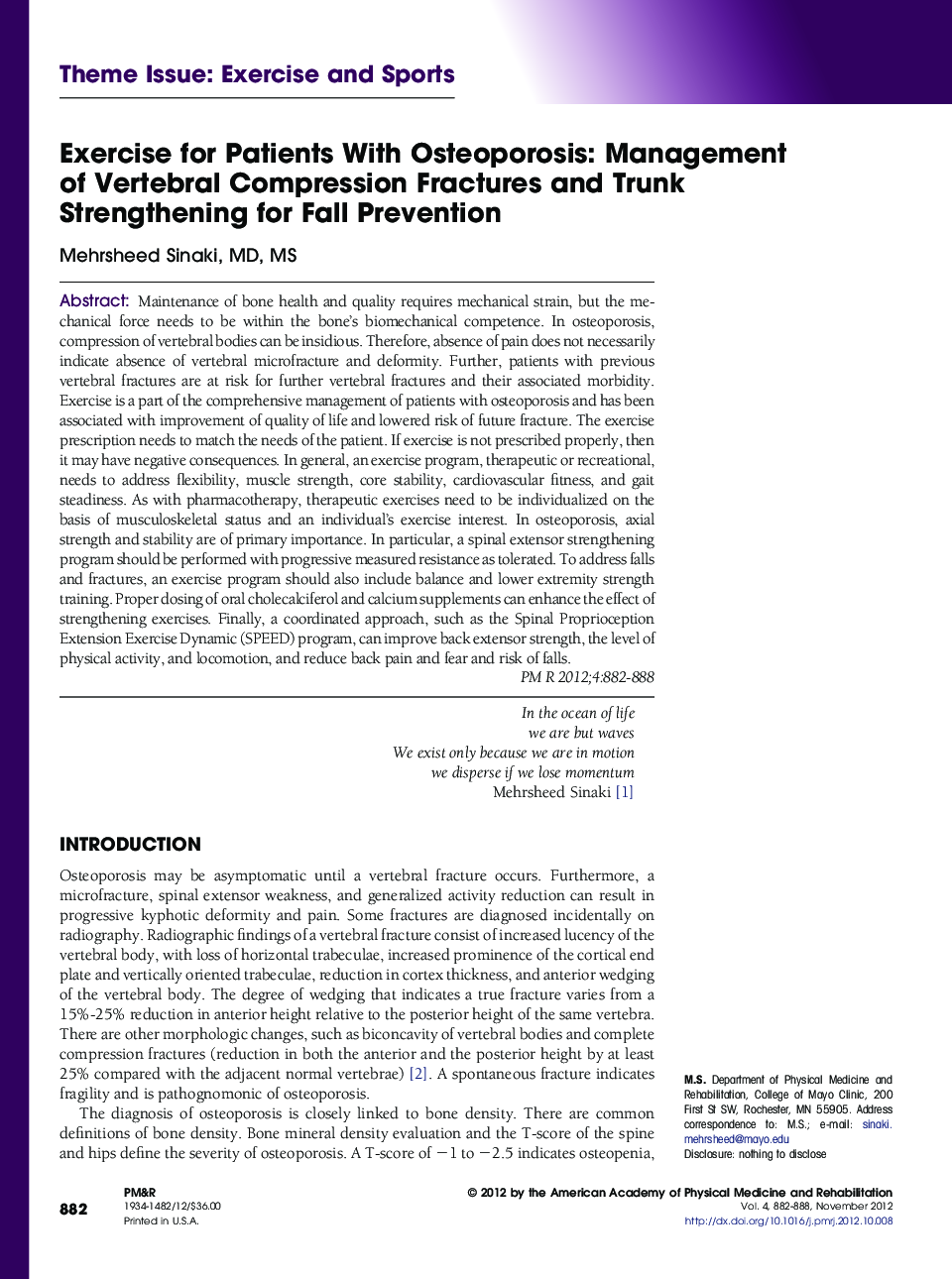| کد مقاله | کد نشریه | سال انتشار | مقاله انگلیسی | نسخه تمام متن |
|---|---|---|---|---|
| 2712503 | 1145101 | 2012 | 7 صفحه PDF | دانلود رایگان |

Maintenance of bone health and quality requires mechanical strain, but the mechanical force needs to be within the bone's biomechanical competence. In osteoporosis, compression of vertebral bodies can be insidious. Therefore, absence of pain does not necessarily indicate absence of vertebral microfracture and deformity. Further, patients with previous vertebral fractures are at risk for further vertebral fractures and their associated morbidity. Exercise is a part of the comprehensive management of patients with osteoporosis and has been associated with improvement of quality of life and lowered risk of future fracture. The exercise prescription needs to match the needs of the patient. If exercise is not prescribed properly, then it may have negative consequences. In general, an exercise program, therapeutic or recreational, needs to address flexibility, muscle strength, core stability, cardiovascular fitness, and gait steadiness. As with pharmacotherapy, therapeutic exercises need to be individualized on the basis of musculoskeletal status and an individual's exercise interest. In osteoporosis, axial strength and stability are of primary importance. In particular, a spinal extensor strengthening program should be performed with progressive measured resistance as tolerated. To address falls and fractures, an exercise program should also include balance and lower extremity strength training. Proper dosing of oral cholecalciferol and calcium supplements can enhance the effect of strengthening exercises. Finally, a coordinated approach, such as the Spinal Proprioception Extension Exercise Dynamic (SPEED) program, can improve back extensor strength, the level of physical activity, and locomotion, and reduce back pain and fear and risk of falls.
Journal: PM&R - Volume 4, Issue 11, November 2012, Pages 882–888